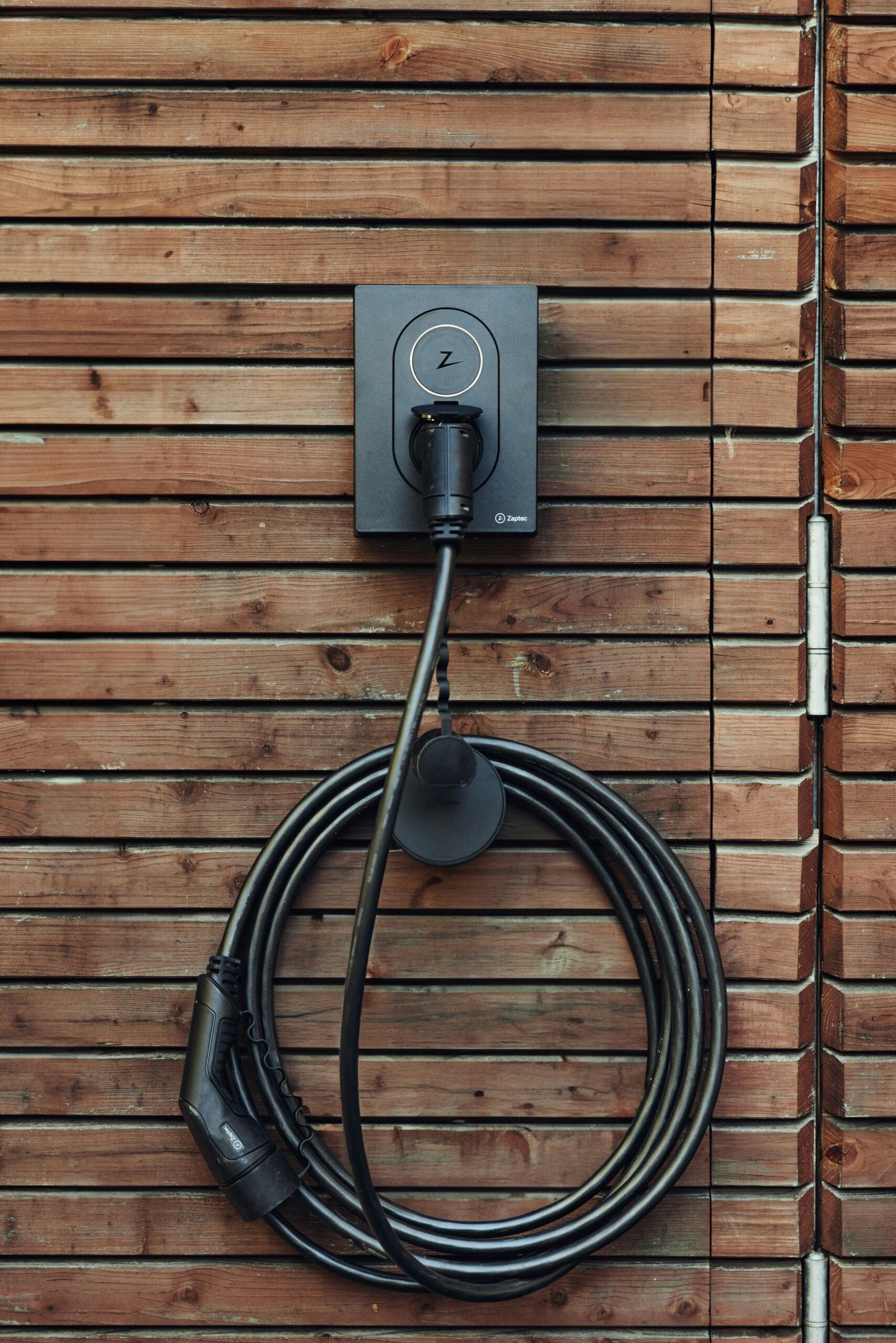With the growing popularity of electric vehicles (EVs), more homeowners are considering installing an EVSE (Electric Vehicle Supply Equipment). When planning for an EV charger installation, one of the primary concerns is whether a standard 100-amp electrical service can meet the changing needs of an electric car.
In this article, we will cover the requirements for electric vehicle (EV) chargers and how to assess whether a 100-amp service can support additional loads on your home’s electrical system. Additionally, we’ll look at how to calculate electrical capacity requirements as well as consider various influences that influence this decision process.
Understanding Electrical Service and EV Chargers
Before considering whether 100 amps is sufficient, it’s essential to gain an understanding of what “100 amp service” entails for your home’s electrical system.
What Is 100 Amp Service?
A 100-amp service refers to the maximum amount of electricity your electrical panel is capable of supplying at any one time, usually enough for lighting, appliances, heating/cooling needs, and other standard electrical needs. Homes built over the past few decades often include this feature in their electrical panel.
As more devices and high-powered appliances – such as electric vehicle chargers – enter modern homes, it is becoming increasingly important to evaluate whether 100 amp service is sufficient. If an upgrade is necessary, an evaluation should take place quickly to identify whether 100-amp is adequate.
What Is an EV Charger? An Electric Vehicle Supply Equipment (EVSE) charger is used to charge an electric vehicle. There are various levels available, as well as options to customize them as desired.
Level 1 (120 Volts): This standard home outlet requires no additional electrical infrastructure for charging; typically adding 2-5 miles per hour of range per charging. Therefore, this method may be slower.
Level 2 (240 Volts): For maximum efficiency, Level 2 chargers require installing their own dedicated 240-Volt circuit and add anywhere from 12-60 miles of range per hour depending on both charger and vehicle.
Level 3 (DC fast charging): This fast-charging option can typically be found at public charging stations and delivers quick charges with its high power requirements; it’s generally not used in residential settings due to this.
As Level 2 chargers are the most widely used home chargers, this article will focus on them exclusively.
Does 100 Amp Service Have Enough Capacity for an EV Charger?
In order to determine whether 100-amp service has enough capacity to support an electric vehicle charger, several factors need to be taken into account, including your existing load on the electrical system, the power requirements of an EV charger, and whether your electrical system has enough available capacity.
Step 1: Evaluate Your EV Charger’s Energy Needs
Most Level 2 EV chargers need a 240-volt circuit and may draw between 16-40 amps, depending on model and vehicle charging specifications. For instance:
- A 16-amp Level 2 charger will draw 3.84 kW of power (240 volts x 16 amps = 3.84 kW).
- A 30-amp Level 2 charger will draw 7.2 kW of power (240 volts x 30 amps = 7.2 kW).
Be mindful that the actual power consumption depends on both the output of your charger and the battery capacity of the vehicle you’re charging; some high-performance electric vehicles (EVs) may charge faster and require additional power for charging.
Step 2: Assess Existing Electrical Load in Your Home
You’ll then need to assess your current electrical load. This includes any appliances and devices in use in your home that use electricity, such as:
Lighting, air conditioning/heating systems and kitchen appliances (refrigerator, oven, microwave etc) as well as laundry equipment (washing machine/tumble dryer/chute) should all be considered in any renovation plan for residential properties. Electronic devices (TVs/computers etc) will also need to be considered in any remodel plan.
Homeowners with 100-amp service may already be using 60-80 amps of their available service for various devices and appliances in use.
Step 3: Calculate Available Capacity
Once you know the current load amperage draw of your vehicle, you can determine its available charging capacity.
Example: At home, if 70 of 100 amps are already used up, 30 remain for other devices (EV charger included) within your home.
Step 4: Determine If You Require an Electrical Panel Upgrade
If the load from an EV charger exceeds your available capacity, an upgrade to your electrical panel may be necessary to accommodate additional amperage consumption. For example, if installing a 40-amp charger will consume 70 amps already from existing loads, 110 amps would be needed in total to meet it.
Understanding Electric Service Load Calculation
Electricians often refer to the National Electrical Code (NEC) guidelines when calculating electrical loads required for electric vehicle charging stations, in order to properly calculate them and ensure they are safe and properly sized to handle the required workload. Below is an easy method for estimating your load:
Determine Existing Load: Add up all existing electrical devices and appliances in your home and add up their amperage consumption. Factor in an EV Charger: Subtract out its amperage before factoring it in with existing loads.
Accounting for Load Diversity: Electrical systems are designed to accommodate “diversity,” meaning not all devices will be operating at full capacity at once. Therefore, the NEC allows a reduction in total load calculations.
Add a Safety Margin: Always include some safety margin in your calculations to ensure you don’t overload your system. A straightforward formula can be found here to calculate total load:
Total Load=Existing Load+EV Charger Load (calculation example:70 amps for lighting, appliances, HVAC, and more).
Charger Load Capacity (for a 30-amp Level 2 charger): 30 Amps
Total Load = 70 amps plus 30 amps for 100 total amps
100 amps would put your electrical panel near its maximum limit; to reduce amp usage further, consider upgrading or installing a charger with lower amperage ratings.
Should You Upgrade to 200-Amp Service?
If your home already consumes significant amounts of power (70-80 amps), and you plan to install an electric vehicle charger, upgrading to 200 amp service may provide a significant increase in electrical capacity to meet future electrical demands, including additional appliances or devices which draw more electricity – this may especially come into play if more than one EV needs charging or there will be significant electrical upgrades in the near future.
Benefits of Upgrading to 200 Amps:
- As soon as your electrical needs increase over time, 200 Amps should more than meet your demands for additional devices like appliances and charging multiple electric vehicles (EVs).
- You will have ample capacity in case this capacity needs to increase further down the line.
- Reduced Risk of Overload: Upgrading to 200 amps may decrease your chance of tripping breakers or overloading circuits; however, upgrading can be expensive, typically costing an average of between $1,500 and $3,000 or more, depending on its complexity and local labor rates.
Final Thoughts
To determine whether your 100-amp service can adequately support an EV charger, it’s essential to calculate its power requirements, consider your existing load, and assess the capacity of your electrical panel. In many instances, 100 amp service may suffice – particularly for installations of chargers consuming between 20-30 amps – however, if your electrical load has reached its maximum or you plan to add higher-powered chargers in the future, an upgrade to 200 amps may be required.
An electrician should conduct a full load calculation and assess your electrical infrastructure to see whether an EV charger will fit seamlessly into it without overburdening your home’s system or exceeding capacity limits. Doing this will help ensure your EV charging needs can be met without overloading.
By understanding the factors affecting your electrical service’s capacity, you can make an informed decision regarding how best to power your EV and ensure an uninterrupted journey.

